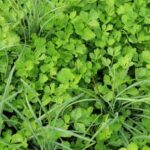Are you interested in starting your own indoor vegetable garden but not sure where to start? In this article, we will provide a comprehensive guide for beginners on how to successfully grow vegetables indoors. Whether you have limited outdoor space, live in a colder climate, or simply want to enjoy fresh produce year-round, indoor vegetable gardening is a great option to explore.
From choosing the right vegetables and understanding light and temperature requirements to proper watering techniques and managing pests, we will cover everything you need to know to get started. So, let’s dive into the world of indoor vegetable gardening for beginners and green up your home with some lush, flavorful plants.
Indoor vegetable gardening for beginners is an excellent way to bring nature into your home while also providing fresh produce for you and your family. With the right guidance and knowledge, you can successfully grow a variety of vegetables in the comfort of your own space.
By following the tips and techniques outlined in this article, you’ll be well on your way to cultivating a thriving indoor garden that will not only brighten up your home but also provide nutritious food for you to enjoy.
One of the first steps in beginning your indoor vegetable garden journey is selecting the right vegetables to grow indoors. Not all vegetables thrive in an indoor environment, so it’s important to choose ones that are well-suited for indoor growing conditions.
Additionally, understanding the light and temperature requirements for indoor gardening is crucial as it will dictate the success of your plants. By learning about these fundamental aspects of indoor gardening, you’ll be better equipped to create an optimal environment for your vegetable plants to flourish.
Choosing the Right Vegetables to Grow Indoors
When it comes to indoor vegetable gardening for beginners, choosing the right vegetables to grow is essential for a successful harvest. Not all vegetables are suited for indoor growing, so it’s important to select those that are well-suited to the conditions of your home.
Some great options for indoor vegetable gardening include herbs like basil, thyme, and oregano, as well as leafy greens such as lettuce, spinach, and kale. These varieties thrive in the controlled environment of an indoor garden and are relatively easy to care for.
Another important factor to consider when choosing vegetables for indoor growing is their size. Since indoor space is limited, it’s best to select compact or dwarf varieties that won’t take up too much room. For example, cherry tomatoes, mini bell peppers, and dwarf beans are excellent choices for small-scale indoor gardens. Additionally, root vegetables like radishes and carrots can also be successfully grown indoors in deep containers.
Furthermore, it’s important to consider the time it takes for a vegetable plant to mature when selecting what to grow indoors. Some vegetables have shorter growing seasons and are better suited for indoor gardening. For example, microgreens can be harvested in just a few weeks and are perfect for beginners looking for quick results. By choosing the right vegetables based on these criteria, beginners can set themselves up for a rewarding experience with indoor vegetable gardening.
Understanding Light and Temperature Requirements for Indoor Gardening
When starting an indoor vegetable gardening for beginners, it is crucial to understand the light and temperature requirements for the plants you want to grow. Different vegetables have different needs when it comes to light exposure and temperature, so it’s important to choose the right spot in your home that can accommodate these requirements.
First and foremost, most vegetable plants need at least 6-8 hours of direct sunlight each day. If you don’t have access to a spot in your home that receives this amount of sunlight, you may need to invest in grow lights to ensure your plants get the light they need. When choosing grow lights, look for full-spectrum LED lights that mimic natural sunlight, as these are the best option for indoor vegetable gardening.
In terms of temperature, most vegetables require temperatures between 65-75°F (18-24°C) during the day and slightly cooler temperatures at night. Be mindful of the specific temperature needs of the vegetables you want to grow and make sure your indoor space can provide the right conditions.
Additionally, be aware of any drafts or hot spots in your home that could affect the temperature around your plants. By understanding and meeting these light and temperature requirements, you will set yourself up for success with your indoor vegetable gardening for beginners journey.
Selecting the Best Containers and Soil for Indoor Vegetable Gardening
When it comes to indoor vegetable gardening for beginners, selecting the right containers and soil is crucial for the success of your plants. The first step in container selection is to ensure that they have proper drainage holes to prevent waterlogging, which can lead to root rot. Consider using containers made of plastic, ceramic, or even fabric pots, as they are lightweight and easy to move around if needed.
The next consideration is the type of soil you will use for your indoor vegetable garden. It’s important to use a high-quality potting mix that is well-draining and specifically formulated for container gardening. Avoid using garden soil from outside, as it may contain pests, diseases, and weed seeds that can harm your indoor plants.
Another option for indoor vegetable gardening is hydroponics, which eliminates the need for soil altogether. With this method, plants are grown in a nutrient-rich water solution, providing them with everything they need to thrive. Hydroponic systems come in various sizes and complexity levels, making them a versatile choice for indoor gardening enthusiasts.
In addition to choosing the right containers and soil, it’s also essential to consider the size of your containers in relation to the mature size of the vegetables you plan to grow. Some vegetables require deeper containers to accommodate their root systems, while others can thrive in more shallow pots. By paying attention to these details and selecting the best containers and soil for your indoor vegetable garden, you’ll be setting yourself up for success from the start.
Essential Tools and Equipment for Indoor Gardening
When starting an indoor vegetable garden as a beginner, it’s important to have the right tools and equipment to ensure the success of your plants. Here are some essential items you’ll need to have on hand:
1. Garden Trowel: A small hand trowel is essential for transplanting seedlings and maintaining your indoor garden.
2. Pruning Shears: Trimming and pruning your vegetable plants will encourage healthy growth, so investing in a good pair of pruning shears is a must.
3. Watering Can: Since overwatering can be detrimental to indoor plants, a watering can with a narrow spout will allow you to water your plants without disturbing the soil too much.
4. Plant Mister: Some vegetables, such as lettuce and spinach, thrive in high humidity environments. A plant mister can help you maintain the necessary moisture levels for these types of plants.
5. Grow Lights: If natural light is limited in your indoor space, consider investing in grow lights specifically designed for indoor gardening to provide the necessary light for your vegetables to thrive.
6. Humidity Tray: To increase humidity around your plants, especially during the drier months, a humidity tray filled with water and pebbles can be beneficial.
These tools and equipment are essential for maintaining a successful indoor vegetable garden as a beginner. Having these items readily available will make it easier to care for your plants and ensure they have everything they need to grow and produce fresh vegetables year-round. With the right tools at your disposal, you’ll be well-equipped to tackle any challenges that may arise while cultivating your indoor vegetable garden.
Proper Watering and Fertilizing Techniques for Indoor Vegetable Plants
Understanding the Watering Needs of Indoor Plants
When it comes to indoor vegetable gardening for beginners, one of the most important aspects to understand is the watering needs of your plants. Different vegetables have different water requirements, so it’s crucial to research and understand the specific needs of each type of plant you are growing. Overwatering can lead to root rot and other problems, while underwatering can cause wilting and stunted growth.
Tips for Proper Watering
One key tip for proper watering is to check the moisture level of the soil regularly. You can do this by sticking your finger into the soil up to about an inch deep – if it feels dry at that depth, it’s time to water. It’s also essential to water your plants in the morning, allowing any excess moisture on leaves to evaporate throughout the day, which can help prevent diseases.
Fertilizing Techniques for Indoor Vegetable Plants
Understanding Fertilizer Needs
In addition to proper watering, indoor vegetable plants also need adequate nutrients to thrive. When choosing a fertilizer for your indoor garden, look for a balanced formula designed specifically for vegetables. This will ensure that your plants are getting the right balance of nitrogen, phosphorus, and potassium.
Tips for Fertilizing Indoor Vegetable Plants
It’s crucial not to over-fertilize as this can lead to excessive foliage growth at the expense of fruit production in some cases. Follow package instructions carefully when fertilizing your indoor vegetable plants and be sure not to apply fertilizer directly onto plant leaves as this can cause burning. Additionally, consider using organic fertilizers as they provide slow-release nutrients and contribute to healthy soil structure over time.
By following proper watering and fertilizing techniques, you’ll give your indoor vegetable garden a strong foundation for healthy and bountiful crops.
Managing Pests and Diseases in Indoor Vegetable Gardens
One of the biggest challenges for beginner indoor vegetable gardeners is managing pests and diseases. Even though your plants are indoors, they can still be susceptible to a variety of issues that can affect their health and productivity. However, with proper knowledge and preventive measures, you can keep your indoor vegetable garden thriving.
When it comes to pests, common ones to watch out for in indoor vegetable gardens include aphids, spider mites, and whiteflies. These pests can quickly infest your plants if not dealt with promptly. Inspecting your plants regularly for any signs of pest infestation is crucial in catching and addressing the issue early on.
In addition to pests, indoor vegetable plants can also be affected by diseases such as powdery mildew, leaf spot, and root rot. To prevent these diseases from taking hold of your plants, it’s important to provide good air circulation around your plants, avoid overwatering, and ensure that the humidity levels in your indoor garden are appropriate for the vegetables you are growing.
Finally, it’s important to note that using chemical pesticides or fungicides indoors may not be ideal due to the confined space and potential health risks. Instead, try using natural remedies such as neem oil or insecticidal soap to control pests while keeping your indoor environment safe.
| Common Indoor Garden Pests | Common Indoor Garden Diseases |
|---|---|
| Aphids | Powdery Mildew |
| Spider Mites | Leaf Spot |
| Whiteflies | Root Rot |
By staying vigilant and taking proactive steps to prevent pests and diseases through proper plant care and maintenance, you can ensure a successful harvest of fresh vegetables from your indoor garden. Remember that maintaining a healthy growing environment is key to keeping your indoor vegetable plants strong and productive.
Tips for Success and Troubleshooting Common Issues in Indoor Vegetable Gardening
When starting out with indoor vegetable gardening for beginners, it’s important to keep a few tips in mind to ensure success and troubleshoot common issues that may arise. One of the key factors in successful indoor vegetable gardening is choosing the right vegetables to grow indoors. Some ideal options for beginners include herbs like basil and mint, leafy greens such as spinach and lettuce, as well as compact varieties of tomatoes and peppers.
Understanding the light and temperature requirements for indoor gardening is also crucial. Most vegetables require at least 6-8 hours of sunlight each day, so be sure to place your indoor garden near a sunny window or invest in grow lights if natural light is limited. Additionally, maintaining proper temperature levels between 65-75°F will help your plants thrive.
Another important aspect of successful indoor vegetable gardening is selecting the best containers and soil. Choose containers that allow for adequate drainage to prevent waterlogged soil, and use a high-quality potting mix specifically formulated for vegetables. Proper watering and fertilizing techniques are also essential for healthy plant growth. Be mindful not to overwater your plants, and use a balanced fertilizer designed for vegetables according to the instructions on the label.
It’s also crucial to be proactive in managing pests and diseases in your indoor vegetable garden. Keep an eye out for common issues like aphids, spider mites, or powdery mildew, and take prompt action using safe and effective methods such as neem oil or insecticidal soap. By following these tips and troubleshooting common issues, you’ll be well on your way to enjoying a bountiful harvest from your indoor vegetable garden.
Harvesting and Enjoying the Fruits of Your Indoor Gardening Labor
After weeks of care and nurturing your indoor vegetable garden, the time has finally come to harvest the fruits of your labor. This is an exciting and rewarding moment for any beginner indoor gardener, as you get to enjoy the delicious, fresh produce that you have grown with your own hands. In this section, we will explore the best practices for harvesting your indoor vegetables and offer tips for enjoying them to their fullest.
Knowing When to Harvest
Before you start picking your vegetables, it’s important to know when they are ready for harvest. Each type of vegetable has its own indicators for ripeness, such as size, color, and texture. For example, tomatoes should be fully colored and slightly firm when squeezed, while leafy greens can be harvested as soon as they reach a desirable size. Be sure to research the specific harvesting requirements for each vegetable in your indoor garden.
Proper Harvesting Techniques
When it comes to harvesting your indoor vegetables, gentle handling is key. Use clean and sharp garden shears or scissors to cut the vegetables from the plant, rather than pulling or twisting them off. This will minimize damage to the plant and help ensure a longer overall harvest period. Additionally, be mindful of the time of day when you harvest – early morning is often best as plants are hydrated but not stressed by heat.
Enjoying Your Indoor Harvest
Once you’ve harvested your fresh vegetables, it’s time to enjoy them in various culinary creations. Whether you choose to savor them raw in salads or as snack options or incorporate them into cooked dishes like stir-fries or soups – having fresh produce at arm’s reach should inspire creativity in the kitchen. Celebrate your success by sharing your bountiful indoor harvest with friends and family or consider preserving any surplus through freezing or canning for future use.
As a beginner in indoor vegetable gardening, experiencing the joy of harvesting and enjoying home-grown produce is both gratifying and motivating – providing inspiration for future endeavors.
Conclusion and Resources for Further Learning About Indoor Vegetable Gardening for Beginners
In conclusion, indoor vegetable gardening for beginners can be a rewarding and enjoyable experience. By choosing the right vegetables, understanding their light and temperature requirements, selecting the best containers and soil, and using the essential tools and equipment, anyone can successfully grow vegetables indoors. Proper watering and fertilizing techniques, as well as managing pests and diseases, are also crucial aspects to consider for a thriving indoor vegetable garden.
While there may be some common issues that beginners may face in indoor vegetable gardening, with the right tips for success and troubleshooting methods, these challenges can be overcome. And once your hard work has paid off with a bountiful harvest, you get to enjoy the fruits of your labor in the form of delicious homegrown vegetables.
For those who want to delve deeper into the world of indoor vegetable gardening, there are many resources available for further learning. Whether it’s books, online tutorials, or joining a community of like-minded individuals, there are endless opportunities to expand your knowledge and expertise in this fulfilling hobby. So don’t hesitate to continue learning and experimenting with indoor vegetable gardening – it’s a journey that can bring joy and satisfaction for years to come.
Frequently Asked Questions
How Do I Start an Indoor Vegetable Garden?
Starting an indoor vegetable garden can be a fun and rewarding project. First, assess the available space and lighting in your home. Choose a suitable location near a window or invest in grow lights.
Select vegetables that are well-suited for indoor growing, such as herbs, leafy greens, tomatoes, and peppers. Make sure to use containers with proper drainage and good quality potting soil.
What Is the Best Indoor Garden for Beginners?
For beginners, a simple option for an indoor garden is a container garden. This type of garden allows you to grow vegetables in pots or other suitable containers within your home.
It’s a great way to start small and learn the basics of indoor gardening without feeling overwhelmed. Herbs, lettuces, cherry tomatoes, and green beans are good choices for beginners.
What Vegetables Are Good for an Indoor Garden?
Many vegetables are suitable for growing indoors, including leafy greens like lettuce, spinach, and kale. Herbs such as basil, parsley, and cilantro also thrive indoors. Additionally, compact varieties of tomatoes and peppers can be grown successfully in containers indoors. Root vegetables like radishes and carrots can also be grown in deeper pots with well-draining soil.

If you’re looking to get into vegetable gardening, or are just looking for some tips on how to make your current garden better, then you’ve come to the right place! My name is Ethel and I have been gardening for years. In this blog, I’m going to share with you some of my best tips on how to create a successful vegetable garden.





